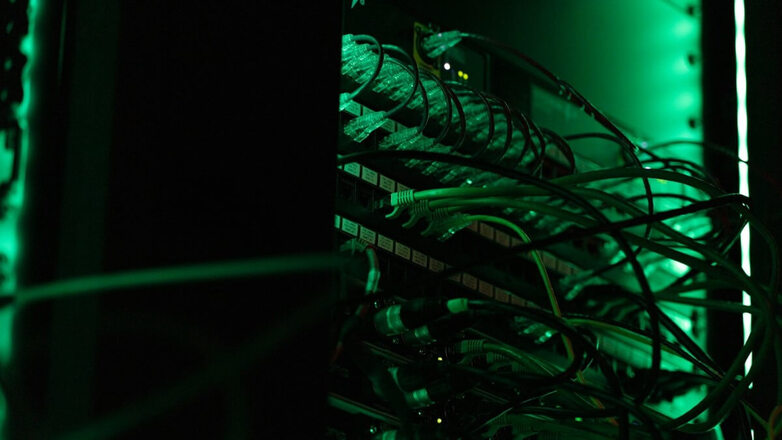Due to the fact that dedicated server hardware provides unrivaled levels of security, privacy, and sheer processing power, it can be an excellent choice for some high-quality applications. On the other hand, cloud services are lauded for their extensive capabilities, adaptability, and the capacity to scale on demand. The bare metal server, which combines the best of both worlds, is becoming an increasingly popular option that combines these benefits while also gaining popularity.
Although they are often used interchangeably in the industry, bare metal servers and dedicated servers are not the same thing. The differences are significant, even if some businesses may refer to ‘bare metal’ as a more upscale version of dedicated server hardware. Users of dedicated servers pay a regular monthly charge in exchange for full access to dedicated hardware. On a dedicated server, they can run a wide range of business applications, popular websites, and other computationally demanding web-facing tasks on this server hardware. Various components can be installed on the server hardware used for dedicated hosting. The servers’ main components are the CPU (Central Processing Unit), which is also known as RAM (Random Access Memory), the hard disk drives (HDDs), or solid state drives (SSDs), depending on preference.
Disconnecting the server operations from the underlying hardware while maintaining a strong link between the workload and the server hardware installed upon is an essential feature of bare metal servers. We’re not just discussing virtualization of the server hardware here, even if server tasks are being separated from the underlying hardware. Thus the name bare metal. Users of bare metal servers should, in most use cases, have complete control over the server’s actual metal hardware.
Dissecting Bare Metal Server Technology
Bare metal hypervisors, also known as Type 1 hypervisors, are virtualization software installed directly on the server hardware. Unlike Type 2 hypervisors, which run on top of an existing operating system, Type 1 hypervisors communicate directly with the hardware. This direct interaction allows for the efficient management of virtual environments, as it bypasses the typical overhead associated with operating systems. Enterprises can thus build, test, and host applications using multiple virtual machines (VMs) with enhanced performance and reduced latency.
For businesses that need to manage several operating systems, allocate resources efficiently, and maximize hardware usage, bare metal hypervisors may offer a sophisticated solution. They effectively handle complex virtual environments, minimizing downtime and ensuring high performance. The absence of an underlying operating system means that Type 1 hypervisors are not constrained by the limitations of hosted hypervisors, allowing them to deliver exceptional performance and low latency.
However, while Type 1 hypervisors can provide significant advantages, there are also challenges associated with their implementation. The direct interface with server hardware ensures superior speed and latency but can complicate the setup and management processes. This complexity would require a higher level of expertise and a thorough understanding of the underlying hardware and software environments. Additionally, the initial setup costs and maintenance of bare metal infrastructure can be higher compared to more traditional hosting solutions, which may pose a barrier for smaller enterprises.
Dedicated Hardware Security vs Cloud Flexibility
In many scenarios, the blend of dedicated hardware’s security and the cloud’s flexibility makes bare metal servers an attractive option. For instance, industries that handle sensitive data, such as finance and healthcare, would often require the stringent security and compliance capabilities that dedicated hardware provides. At the same time, they benefit from the flexibility and scalability of cloud-like services to handle variable workloads and growing data needs. Bare metal servers may provide this hybrid capability, offering robust security while enabling the dynamic allocation of resources through virtualization.
Managed hosting service providers can leverage bare metal servers to deliver tailored solutions that meet the specific needs of their clients. These servers allow providers to offer high-performance computing resources with the flexibility of cloud services, thus attracting a broader client base. By utilizing bare metal hypervisors, hosting providers can optimize resource allocation and enhance server utilization, delivering better performance and cost-efficiency.
For end-users, the benefits of bare metal servers are manifold. They can achieve higher performance levels for their applications due to the reduced overhead and improved resource management that bare metal hypervisors provide. Additionally, the security advantages of dedicated hardware are preserved, ensuring that sensitive data and applications are protected from potential vulnerabilities associated with multi-tenant environments. Furthermore, the ability to scale resources on demand allows businesses to handle peak loads efficiently without overcommitting to infrastructure that may be underutilized during off-peak periods.
Modern Approach to Server Infrastructure
In comparison to traditional dedicated servers, bare metal servers offer a more modern approach to server infrastructure. Traditional dedicated servers are typically more static, with fixed configurations that may not adapt well to changing workloads. Bare metal servers, equipped with hypervisors, provide a dynamic and adaptable environment that can be customized to meet evolving business needs. This adaptability makes them a preferred choice for businesses that require both high performance and flexibility.
To sum up, choosing between cloud services and dedicated hardware does not always have to be a black or white choice. Combining the security and raw processing power of dedicated hardware with the adaptability and scalability of cloud services, bare metal servers can provide an alluring hybrid option. They create a chance for managed hosting companies to offer superior, adaptable services that satisfy a wide variety of customer demands. For end users, bare metal servers may provide a reliable and flexible architecture that can handle even the most demanding applications while maintaining performance and security. Due to their exceptional capacity to provide the greatest features of both dedicated and cloud environments, bare metal servers are expected to become more and more popular as companies continue to traverse the complexity of IT infrastructure.









